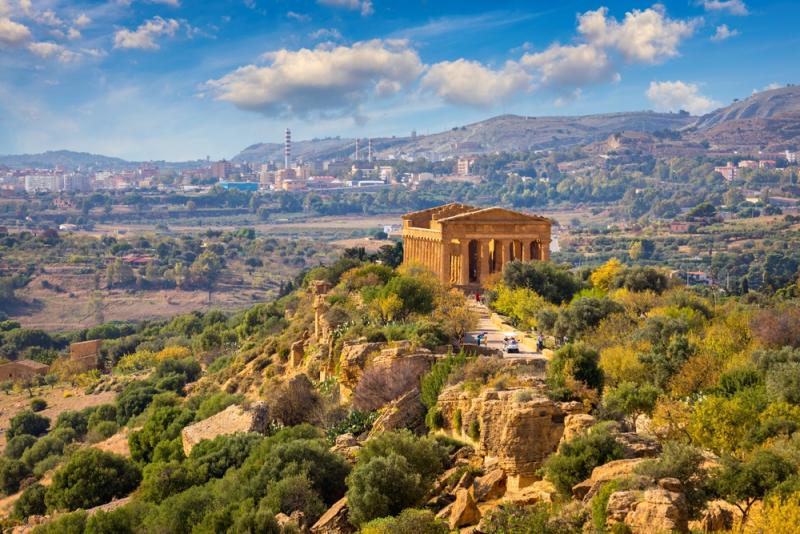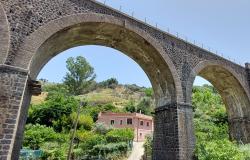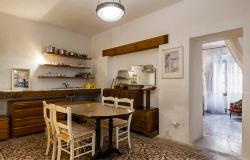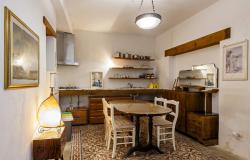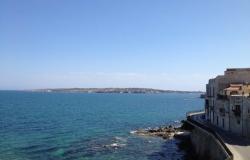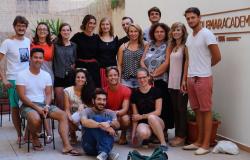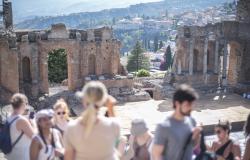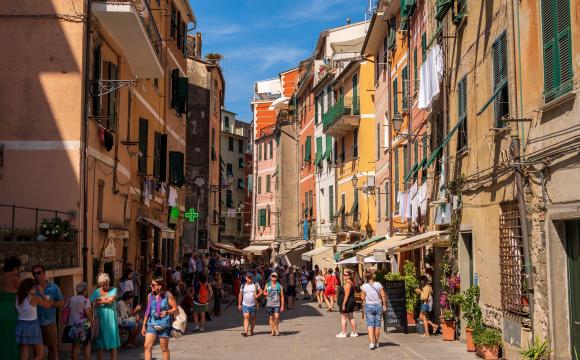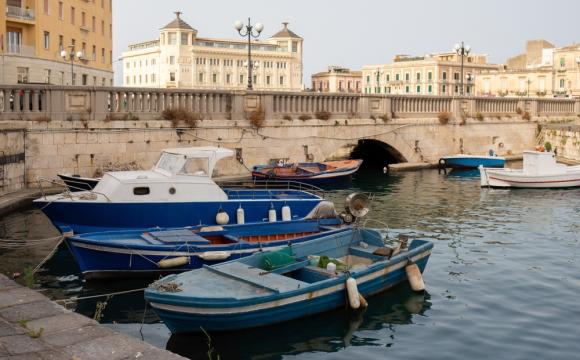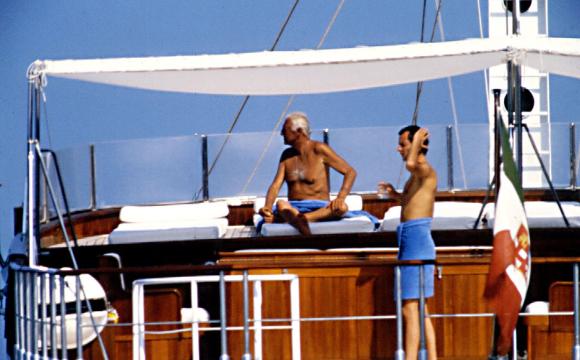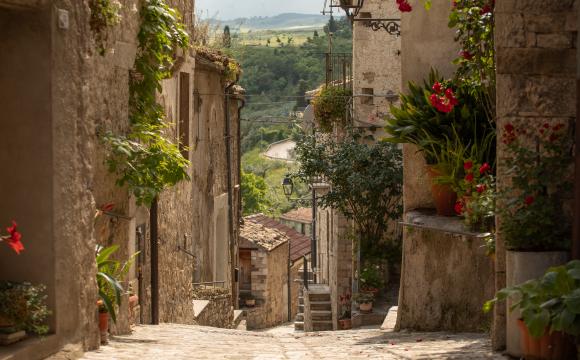This was supposed to be a banner year in the international spotlight for Agrigento, Italian Capital of Culture for 2025.
But the early days of the southern Sicilian town’s tenure have been plagued by bureaucratic complications, infrastructural failings and political tiffs, culminating last week with the forced resignation of the initiative’s president, Giacomo Mannino (who has since been replaced by the former prefect of Palermo, Maria Teresa Cucinotta).
Agrigento took up the torch after Pesaro, capital of Marche and the titleholder in 2024. Each new Italian Capital of Culture rings in its “reign” with an opening ceremony and remarks from Italian President Sergio Mattarella; just one week ahead of the Agrigento inauguration on January 18, the host venue held a concert that ended with rainwater leaking onto the stage.
The opening ultimately went off without a hitch (or a leak). But local media has highlighted other infrastructural and cosmetic issues the city continues to face as its “banner year” gets underway. Residents had hoped the Capital of Culture year would expedite solutions to an ongoing water crisis and spark other forms of urban renewal, but Sky News reported that little action has been taken — including in areas where intervention has been overdue since Agrigento’s disastrous 1966 landslide.
Island time
The Agrigento province also includes the island of Lampedusa, which has long been a European entry point for migrants and has seen a sharp increase in arrivals since 2023. Officially, the Capital of Culture events program involves Lampedusa — most notably with the “Hospitium” project, where Austrian artist-in-residence Tanja Boukal is set to create site-specific works interrogating Lampedusa’s dual identity as a tourism hotspot and a microcosm of European migration challenges.
But reports in recent weeks claim that Lampedusa has been excluded from full participation in the programming and planning process, despite its front-running role in Agrigento’s original proposal submitted to the Italian Ministry of Culture. Critics like former mayor Salvatore “Totò” Martello, the local leader of the center-left Democratic Party (PD), placed the blame on both the Capital of Culture leadership committee and the current administration of Lampedusa (Mayor Filippo Mannino had already pulled out of the planning committee prior to the opening, according to Agrigento Notizie). Martello went on to provocatively suggest that the island should join the province of Palermo instead.
Why Agrigento is much bigger than its “big year”
Agrigento went up against Aosta, Assisi, Asti, Bagnoregio, Monte Sant’Angelo, Orvieto, Pescina, Roccasecca and Spoleto for the coveted Capital of Culture title and funding. Its winning campaign, The Self, the Other and Nature: Relationships and Cultural Transformation, drew inspiration from pre-Socratic philosopher Empedocles, who was born in Agrigento (then “Akragas”) and is credited with creating the concept of the four elements — earth, water, air and fire. Events and initiatives for the year have been organized thematically by element, yet it remains unclear if all programming will go ahead exactly as planned.
But Agrigento’s history transcends the infighting and systemic challenges weighing down its Capital of Culture year — and the place is worth a visit whether or not all the planned events see the light of day.
“Akragas” in ancient times was a thriving cultural center. Greek colonists founded the city in the 6th century BCE, which, even prior to bringing the world Empedocles, drew ancient poets like Pindar of Thebes, who famously called Akragas “the most beautiful of all mortal cities.” It is best known as the home of the Valle dei Templi (Valley of the Temples), an archaeological site steeped in Olympian mythology (and a UNESCO World Heritage Site since 1998). An important center of the Magna Grecia in the Mediterranean, Akragas was conquered by the Romans in 210 BCE and absorbed into the Empire. Later, under Arab rule, the city took on the shape it largely still maintains today, with small streets and alleyways all converging toward Via Atenea, the city’s de facto “main street.” From 1087, the Normans took over, under whom monuments like the local cathedral were built. Agrigento next became part of the Kingdom of the Two Sicilies under Bourbon role up until the unification of modern Italy in the 19th century.
What to see and do in Agrigento today
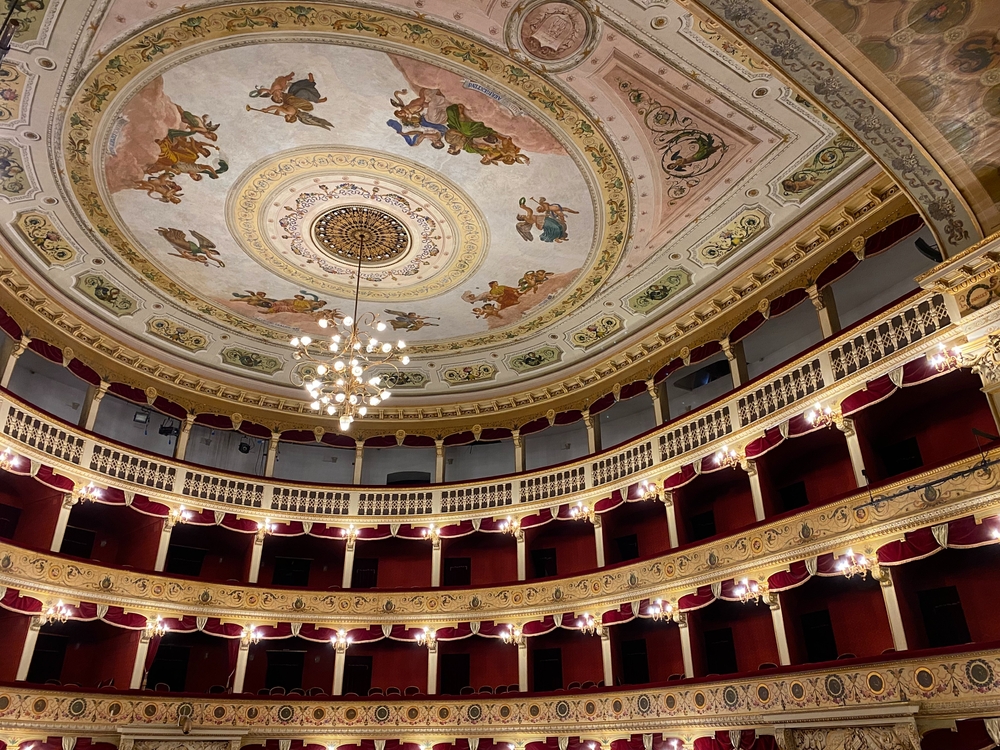
1: Take a stroll through the old quarter
A good place to start is at Piazza Don Minzoni, site of the 12th-century Cathedral di San Gerlando featuring an unfinished 15th-century bell tower cut with a series of Norman-Gothic windows. Inside, the ceiling of the Cappella di San Gerlando boasts frescoes dating from the 16th and 17th centuries.
Don’t miss a peek into the Teatro (Luigi) Pirandello, named for the city’s most famous citizen and Nobel Prize-winning playwright, who influenced playwrights (Samuel Beckett), philosophers (Jean-Paul Sartre) and filmmakers (Woody Allen) with works like Sei personaggi in cerca d’autore (Six Characters in Search of an Author). Founded in 1870 (and renamed in 1946), the theater is always running programming that prominently features Pirandello’s work. (Superfans can stop off at the birthplace of Pirandello just toward the sea in the Parish of Kaos.)
Get in your people-watching at the Piazza Vittorio Emanuele, a large, buzzy square that connects the old town with the newer part of the city. Find your way down Viale della Vittoria to catch a glimpse of the temples backdropped by the Mediterranean Sea — perhaps with a gelato or granita in hand.
2: Head to the beach
Agrigento has sandy beaches that run for miles. The most popular in the area is San Leone and the kid-friendly Blue Flag Porto Palo beach in nearby Menfi. About five miles (7.5km) away is a band of coastline that stretches between Realmonte and Porto Empedode. Here you’ll find the otherworldly La Scala del Turchi (Stairs of the Turks), made of bright white marl rock cliffs that have been sculpted by the forces of nature into magical step formations.
The San Leone district is where the seaside revelers head for cocktails, live music and dancing.
3: Go Greek
Sitting on a plateau south of the city is Agrigento’s most renowned destination, the extraordinarily preserved 2,500-year-old Valle dei Templi (Valley of the Temples), which touts the striking remains of several Doric temples. Among them is the fifth-century Temple of Olympian Zeus, once supported by 38 giant telamons — pillars in the shape of men. One of the originals has been almost perfectly recomposed and is now held in the Archaeological Museum.
The oldest of the remaining structures is the Temple of Heracles (Hercules), while the ruins of the Temple of Castor and Pollux survive with only four columns and a roof intact. The Temple of Hera was built in the fifth century, but was nearly burned to the ground by the Carthaginians. Finally, the Temple of Concordia and its 34 commanding columns leaves quite an impression: It’s not only the best preserved of the lot, it’s also where Igor Mitoraj’s famous 20th-century bronze statue Fallen Icarus lies.
Other park highlights include the lush Garden of Kolymbethra, a remarkable botanical and archaeological treasure, and the early Christian catacombs located between the Temple of Hercules and the Temple of Concordia.
Glimpsing the remains of the ancient civilization is a poignant reminder that the cultural legacy of Agrigento will live on — beyond any misfires made in the province’s efforts to establish more contemporary relevance and attract new visitors.
